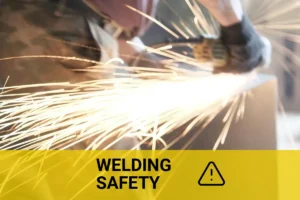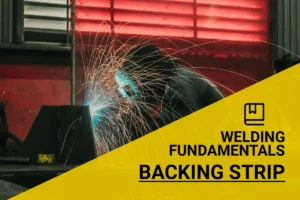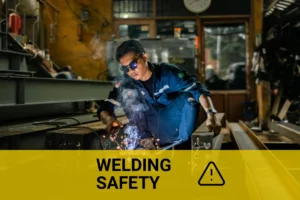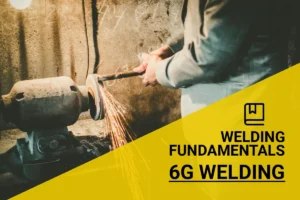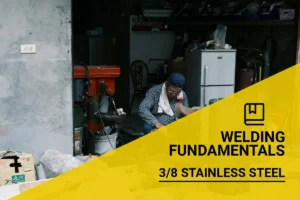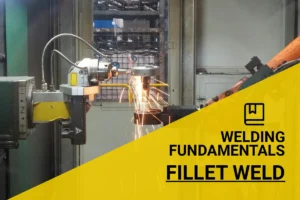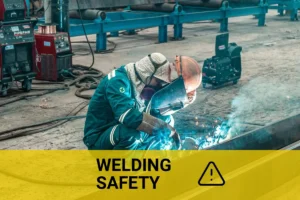What is Dross in Welding? Understanding Dross Types, Minimization, and Impacts
Published on: March 27, 2025 | Last modified: March 4, 2025
By: Joe Carter
Dross is the unwanted material that forms on the surface of welded metal. It’s a mix of impurities that can weaken your welds.
People often ask us, what is dross in welding? It’s crucial to know about dross because it can affect the quality and strength of your welds. I’ve seen it cause issues firsthand, like cracks and weak points, when not taken seriously.
In this guide, you’ll learn about how dross in welding works, the different types of dross, steps to minimize it, factors affecting it, typical issues caused, aftercare and inspection tips, and applications across various fields. We’ll also explore options for achieving cleaner welds, such as what is gouging in welding and its implications for your projects.
Contents
- What is Dross in Welding?
- How Does Dross in Welding Work?
- Types Of Dross in Welding
- Steps for Minimizing Dross in Welding
- Welding Processes Impacting Dross Formation
- Factors Affecting Dross in Welding
- Typical Issues Caused by Dross in Welding
- Aftercare, Inspection, and Advanced Tips for Dross in Welding
- Applications Across Different Fields Related to Dross
- Other Options for Achieving Dross-free Welding
- Frequently Asked Questions (FAQs)
- Dross Recap
- References
What is Dross in Welding?
Dross is that unwanted material forming on the surface of molten metal during welding. It consists of impurities and oxides that reduce weld quality. Manufacturers often clean dross to ensure strong welds in applications like structural steelwork and pipelines.
How Does Dross in Welding Work?
Dross in welding refers to unwanted material that forms on the surface during the welding process. It typically comes from impurities in the base material, like rust, oxides, or other contaminants. When you weld, temperatures can reach up to 1,600°C (2,912°F). At these temperatures, metals can oxidize and create this byproduct, which affects your weld quality.
Understanding dross is vital for achieving strong welds. High levels of dross can lead to porosity and weaken the metal structure. This knowledge helps you anticipate problems and improve your welding technique.
I can’t stress enough how crucial it is to clean the surfaces before welding to minimize dross formation. Over the years, I’ve learned that knowing how to gouge (Cut) a weld properly allows for better surface preparation. Many welders overlook this step, but effective gouging makes a significant difference in the final product.
Types Of Dross in Welding
What are the types of dross in welding?
-
Oxide Dross
Oxide dross is a residue from oxidized metal during welding. It’s leftover material from reactions between heat and metal oxides. To minimize oxide dross, maintain the right temperature and use shielding gases, like argon, to reduce oxidation.
-
Slag Dross
Slag dross forms when flux material combines with metal during welding. It often appears as a crusty layer on welds. To manage slag dross, use the correct flux type and clean the weld between passes to reduce buildup. Mixing gases like helium or argon with CO2 can improve weld quality. For example, 75/25 welding gas mixtures are commonly used for their stable arc and reduced spatter.
-
Gas Dross
Gas dross occurs from gas pockets in the weld bead. It sneaks in due to poor gas flow or contamination. To lessen gas dross, ensure a steady gas flow and check connections to avoid leaks.
-
Metal Dross
Metal dross is undesired material that forms when different metals mix improperly. It can weaken weld integrity. To reduce metal dross, use compatible alloys and preheat metals when needed for better fusion.
-
Flux Dross
Flux dross results from an excess of flux in welding processes. This contaminant can clutter the weld bead. To minimize flux dross, follow the manufacturer’s recommended application rates and remove excess flux as you go.
You should now have a good understanding of the various types of dross in welding. In the next part, we’ll discuss steps to minimize dross.
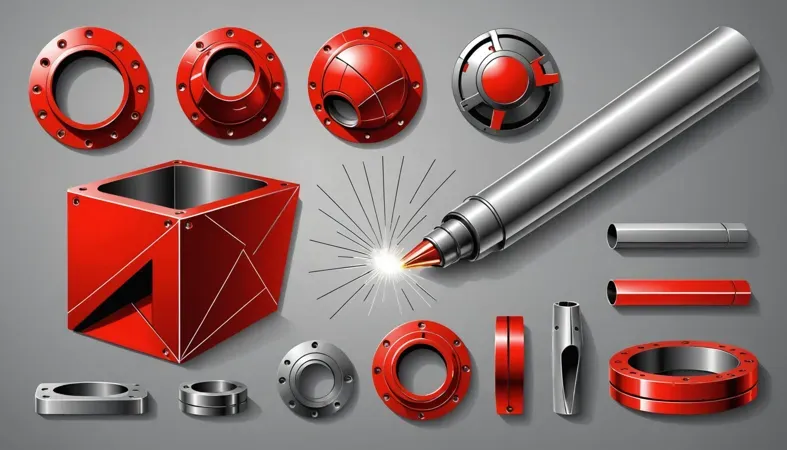
Steps for Minimizing Dross in Welding
Here are steps to effectively reduce dross during welding.
-
Clean Base Materials
Start by thoroughly cleaning the metal surfaces. A clean surface is crucial! Use a degreaser to remove grease and contaminants. This helps reduce oxidation, which can lead to more dross formation.
Use wire brushes or sandpaper to remove any rust or scale. Aim for a surface roughness of about Ra 1.6 µm (63 Μin) or smoother. Remember, the cleaner, the better!
-
Select Appropriate Filler Material
Choose filler material that matches the base metals. If you’re working with aluminum, use an alloy like 4047 for better fusion. Matching the filler to the base metal minimizes dross and ensures a strong joint. An often overlooked technique in welding is peening, which helps in stress relief and enhances the joint’s longevity. Discover more about the importance of peening.
Ensure your filler’s melting point is appropriate—typically around 660 °C (1,220 °F) for aluminum. The right match can significantly reduce the amount of dross produced during welding.
-
Adjust Welding Parameters
Tweak your welding parameters for optimal results. Pay attention to amperage and voltage settings. For steel, the typical range might be 60-140 Amps (A), depending on the thickness. To achieve the best quality welds, consider this welding guidance; decreasing the voltage can help reduce dross formation.
A crucial aspect of welding efficiency involves understanding different current polarities like DCEP in welding.
Fine-tuning these settings is vital. A poorly adjusted welder can produce excessive spatter and dross. A hot and fast pass helps prevent moisture and oxidation from affecting your weld.
-
Use the Correct Welding Technique
Implement an effective welding technique to minimize dross. Techniques like stringer beads and weaves impact the amount of dross. I prefer the stringer bead method for cleaner edges.
Maintain a consistent travel speed—aim for 100 to 300 mm/min (4 to 12 In/min) based on materials. A steady hand keeps the weld pool controlled and shiny, significantly decreasing dross.
-
Perform Post-weld Cleaning
After welding, perform a thorough cleaning. Remove any dross and slag promptly to prevent them from sticking to the weld. Use a grinder or wire brush for effective debris removal.
Acid cleaning solutions can also efficiently remove contaminants. A clean weld area not only looks better but also enhances the structural integrity of the joint!
We have now covered methods to reduce dross in welding. The next section will discuss how welding processes affect dross formation.
Welding Processes Impacting Dross Formation
Different welding processes can vary in how much dross they create. Here’s a breakdown.
| Welding Process | Typical Dross Formation | Benefits | Drawbacks |
|---|---|---|---|
| MIG Welding (GMAW) | Moderate | Fast, suitable for thin materials | Can create more slag if not properly managed |
| TIG Welding (GTAW) | Low | Cleaner welds, better for precision work | Slower and requires more skill |
| Stick Welding (SMAW) | High | Versatile, works in windy conditions | More clean-up required due to high dross |
| Flux-cored Arc Welding (FCAW) | Moderate to High | Good for thicker metals, high deposition rate | Potential for excessive slag and dross |
We covered welding processes and their impact on dross formation. We will now cover the factors affecting dross in welding.
Factors Affecting Dross in Welding
What factors influence the unwanted byproducts formed during welding?
-
Welding Speed
Faster welding speeds can lead to inadequate fusion, increasing dross formation. At speeds over 10 inches per minute (25 Cm/min), you’ll notice more impurities.
-
Welding Angle
The angle of your welding torch directly affects the penetration and coverage of the molten pool. A slight deviation from the optimal 15-30 degrees can increase dross in your weld.
-
Type Of Filler Material
Your choice of filler is critical as it significantly impacts dross formation. Different alloys can create dross, especially those with higher oxidation rates, such as certain aluminum and magnesium fillers.
-
Temperature Control
Maintaining optimal temperatures is essential; excessive heat can lead to atmospheric contamination and dross. Keeping temperatures between 300-500°F (149-260°C) minimizes this risk.
-
Shielding Gas Quality
The quality of shielding gas is vital for protecting the weld pool. Using contaminated or improper gases can introduce impurities, significantly increasing dross formation.
So far we covered the elements influencing dross in welding. Let’s look at the common problems dross creates in welding next.
Typical Issues Caused by Dross in Welding
Let’s look at some specific problems caused by dross.
-
Reduced Weld Integrity
Dross can reduce weld integrity. Look for cracks or voids that weaken the weld. To fix this, grind away the dross before rewelding.
-
Surface Appearance Defects
Dross causes surface appearance defects. These can be very unsightly! Inspect for rough or uneven surfaces. Clean the area with a wire brush to improve the finish.
-
Increased Post-weld Cleaning
Dross means more post-weld cleaning. Extra cleanup is needed for a smooth surface. Use solvent and scrub to effectively remove dross residues.
-
Compromised Joint Strength
Dross can compromise joint strength. Inspect joints for signs of weakness due to molten slag. Remove dross before test welding for stronger joints.
-
Higher Material Waste
Dross often results in higher material waste. A messy weld wastes additional metal. Use correct welding settings and techniques to minimize dross.
Aftercare, Inspection, and Advanced Tips for Dross in Welding
Here’s essential advice on aftercare, inspection, and advanced techniques for managing dross in your welding processes.
Aftercare Recommendations
After welding, clean the dross with a wire brush or grinder. Aim for a surface clean down to around 0.1 mm (0.004 In) to ensure a solid weld. Power tools effectively remove contaminants. For stubborn spots, consider using a plasma torch for precise cleanup. It’s crucial to also address welding spatter, which not only affects the seam’s appearance but can compromise the weld’s integrity. Discover effective ways to prevent spatter during the welding process.
Inspection Techniques
Inspect the weld for dross with a caliper; aim for minimal remaining dross—no more than 2 mm (0.08 In) deep. Focus on areas where dross accumulates, like corners and overlaps. Use a product like Miller’s Sweet 15 to chemically loosen residues while maintaining weld integrity.
Expert Recommendations
For experts, always control heat input to reduce dross formation—target a welding speed of 100 mm/min (3.94 In/min) for optimal penetration. Adjust your shielding gas; I prefer a 75/25 argon to carbon dioxide mixture, which helps minimize dross. Additionally, practice stringer beads instead of weave patterns for cleaner edges. It’s crucial to also consider the health impacts associated with welding, as there are effective ways to prevent cancer from welding.
Applications Across Different Fields Related to Dross
Dross can be a challenge in welding, but it has several valuable applications, including:
- Metal Recycling: Dross forms during aluminum welding and can be melted for reuse, improving resource efficiency and reducing costs.
- Dross Removal Equipment: Specialized tools, like plasma cutters, reduce dross formation, which is crucial for precise cuts in automotive manufacturing.
- Welding Jigs: Some designs use dross to enhance stability during welding, popular in heavy fabrication for better joint integrity.
- Preventive Maintenance: Businesses analyze dross to evaluate welding quality, helping predict equipment failure and save on repair costs.
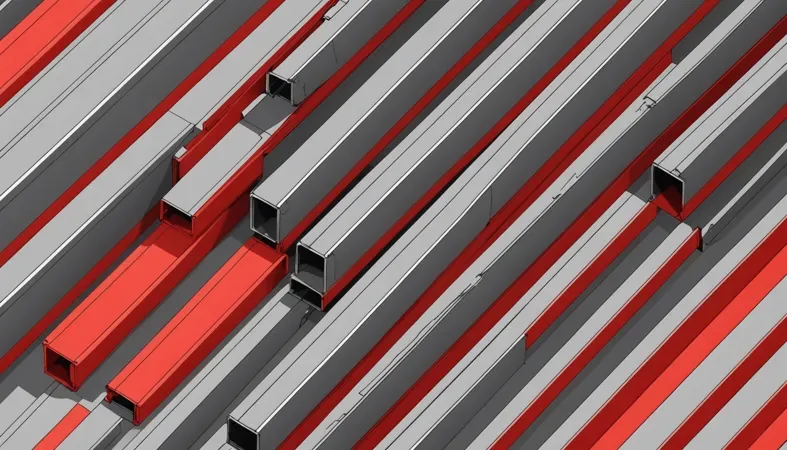
Other Options for Achieving Dross-free Welding
To avoid dross, you can use methods like gas tungsten arc welding (GTAW). With GTAW, you get cleaner welds using a non-consumable electrode, which can minimize unwanted residue. It’s especially preferred for thin materials, like aluminum, due to its precision. Here’s what I’ve learned – tools like the Miller Syncrowave 210 can make a big difference.
Another viable option is plasma cutting. Here, the high-temperature plasma can help reduce dross formation on metal surfaces. Machines such as the Hypertherm Powermax provide excellent results for cutting, thus ensuring cleaner edges. Choosing the right method depends on the materials and desired finish – you want the best, right?
Frequently Asked Questions (FAQs)
Now let us look at some questions I typically get asked.
What is Gouging in Welding?
Gouging in welding is the process of removing material to create a groove. This is often used for preparing surfaces for new welds. It typically employs tools like a plasma cutter or carbon arc gouging, achieving grooves up to 10 mm deep (0.4 In) depending on the process and materials used. For a deeper understanding of the mechanisms involved, explore how a welding machine operates.
What is Back Gouging in Welding?
Back gouging in welding is when you remove material from the root side of a weld. This technique ensures full penetration, improving the weld’s strength. You usually want to gouge to about 30% of the base material’s thickness for optimal results.
Each welding technique has its own characteristics and applications that influence the final result. To explore how spray transfer impacts weld penetration and efficiency, you may want to understand more about spray transfer welding.
How to Gouge a Weld?
To gouge a weld, start by using a plasma cutter or carbon arc. These methods remove metal effectively while managing heat and distortion. Ensure you maintain a steady hand for even depth, aiming for a groove width of about 5-12 mm (0.2-0.5 In). Choosing the right gas is vital for successful welding operations. Learn about various gases used for welding to improve the quality of your work.
What is Scarfing in Welding?
Scarfing in welding refers to a process for preparing metal surfaces by removing contours or grooves. It enhances the surface for welding, creating a clean area that allows for better adhesion. It’s essential when joining dissimilar materials or thick sections.
What is Meant by Back Gouging in Welding?
Back gouging in welding means removing weld material from the backside of the joint. This technique ensures complete fusion and eliminates potential defects in the weld’s root. Proper back gouging can increase the weld quality significantly, especially in thicker materials.
What is the Difference Between Dross and Slag?
The difference between dross and slag lies in their composition and purpose. Dross forms on the surface of molten metal due to impurities, whereas slag primarily comes from flux during welding to protect the weld. Each needs to be managed properly for quality welds.
How to Get Rid Of Dross?
To get rid of dross, you can remove it mechanically or use a torch to burn it off. Proper settings during welding can also minimize dross formation, enhancing productivity. Reducing dross can save time, as it helps in achieving a cleaner weld.
What is Dross in Steel?
Dross in steel refers to the oxidation and other impurities found on molten steel’s surface. This affects weld quality and appearance. Effective removal is crucial to avoid issues like porosity in finished welds, potentially costing time and resources in repairs.
Dross Recap
I hope this gave you what you needed about dross in welding. We covered what dross is, how it works, the types of dross, and steps to minimize it, plus factors affecting it. We also discussed typical issues caused by dross, aftercare, inspection tips, applications in different fields, and fundamentals of welding to achieve dross-free welding.
Hopefully, I was able to impart some of my experience on what dross is in welding. In simple terms, dross is the unwanted material that forms on the surface during welding, caused by impurities in the metal or the welding process. Remember, minimizing dross is critical to maintaining weld quality and durability, ensuring you have a clean and strong joint.
For a deeper dive into the world of welding, feel free to visit What is Welding for comprehensive insights and resources on all things welding.
References
- Lincoln Electric. (2020). The Procedure Handbook of Arc Welding (15th ed.). Cleveland, OH: Lincoln Electric Company.
- Smith, D. L. (2010). Welding: A Journey to Explore Its History. Dubuque, IA: Kendall Hunt Publishing Company.
Joe Carter is a retired welding professional with over 40 years of hands-on experience in the industry, spanning ship repair, structural welding, and even underwater projects. Joe is a master of MIG, TIG, and Stick welding. Passionate about mentoring the next generation of welders, Joe now shares his decades of expertise and practical insights to help others build rewarding careers in welding.
Dross In Welding, Dross Minimization, Metallurgical Impurities, MIG Welding, Structural Integrity, TIG Welding, Weld Quality, Welding, Welding Processes, Welding Techniques
